Only a few days left to see Glitch Moment/ums at Furtherfield Gallery in Finsbury Park! The show is about glitches or those malfunctions, bugs or sudden disruptions to the normal running of machine hardware and computer networks.
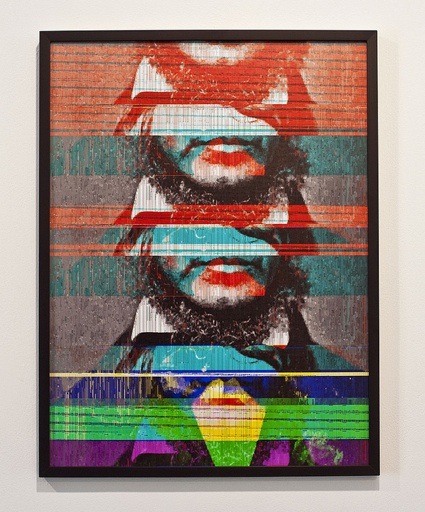 José Irion Neto, Thoreau Glitch Portrait, 2011. Image Furtherfield
José Irion Neto, Thoreau Glitch Portrait, 2011. Image Furtherfield
From a video tutorial on how to make your own glitched visuals to screen captures of glitches weaved in black and green, the exhibition shows various approaches by artists hacking familiar hardware and their devices which include mobile phones, and kindles. They disrupt both the softwares and the digital artefacts produced by these softwares, whether it be in the form of video, sound and woven glitch textiles.
It’s a stimulating show for anyone who is already interested in glitch culture. And it’s an eye-opening experience for those who have only vaguely heard of the artistic approach to tech errors. I’m somewhere in the middle. I’d never pass for a glitch expert but over the past few years, i’ve encountered a few artworks that make a creative use of accidents or create them on purpose.
Glitch Moment/ums was curated by Rosa Menkman and Furtherfield. One can’t dream of a more competent curatorial team: Rosa is the editor of The Glitch Moment(um) book (which i can’t recommend enough) and the organizer of the GLI.TC/H festival. Among their many activities, Furtherfield are running one of the most approachable and though-provoking galleries dedicated to practices in art and technology i’ve ever visited.
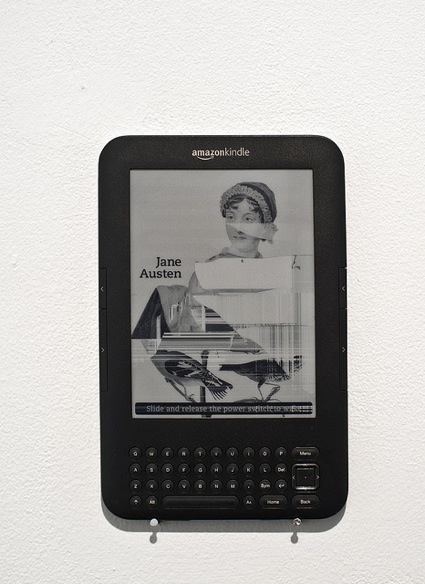 Benjamin Gaulon, KindleGlitched, 2012. Image Furtherfield
Benjamin Gaulon, KindleGlitched, 2012. Image Furtherfield
Because i still have much to learn about everything tech & glitch, i contacted visualist, theorist and curator Rosa Menkman and asked her a few questions about the show and about glitch culture in general:
What does moment/ums – the title of the exhibition – refer to?
The title of the exhibition ‘Glitch Moment/ums’ references ‘the Glitch Moment(um)’ book I released in 2011. In this book I describe how my first encounter with a piece of glitch art came hand in hand with a feeling of shock. What had once been a first person shooter was now a broken, pixelated vortex of confusion (Jodi, Untitled Game, 2006). I was lost and in awe, trying to come to terms with an experience that seemed unforgivable. But finally, these ruins of expected functionality revealed a new opportunity, a spark of creative energy that showed that something new had taken shape. I felt questions emerge; what is this utterance, and how was it created? Is this perhaps …a glitched video environment? But once I had named the glitch, the momentum -the glitch- was gone …and in front of my eyes suddenly a new form had emerged.*
These days I try to understand glitches as a manifold of moment/ums, having their meaning depend on time, discourse and context from which they are perceived. First, the glitch is a break from an expected flow within a (digital) system. Here, it is perceived as an absence of (expected) functionality and often experienced as an uncanny, threatening loss of control. This moment itself then can become a catalyst, with a certain momentum – a power that forces knowledge about actual and presumed media flow, onto the viewer. What was voided of meaning, becomes interpreted and gains new meaning.
But as I wrote in the (Glitch) Art Genealogies catalogue: [the meanings of] these glitches are constantly subject to revision: their language systems emerge, their meanings shift, idioms ossify and standardize into a fashion or genre.
…and then they change again.
The glitch thus heralds a transformative power – a potential to modulate or productively damage the norms of (techno-)culture. To study glitch is to engage a study of the succeeding turns and changes of failure and functionality, revolutions and ossification. A concept represented in Antonio Roberts work ‘What is Revolution?’.
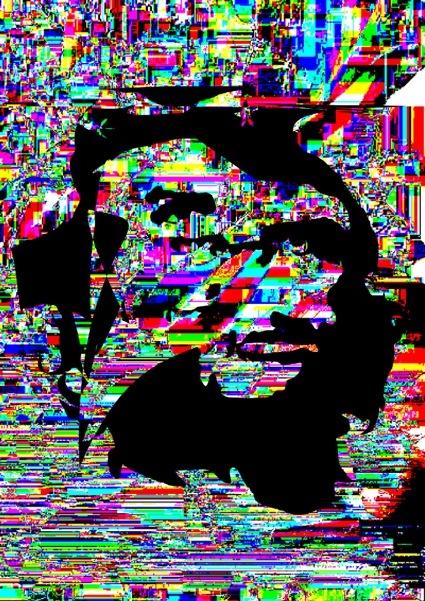 Antonio Roberts, What Revolution?, 2011
Antonio Roberts, What Revolution?, 2011
How come something that used to be regarded as a problem has been elevated to a phenomenon that is exhibited online and in art galleries?
I feel that many people have lost the ability to formulate questions – this generation has become good at researching and finding answers or creating new datasets: In university, in the library, or on google (‘the internet’) we are conditioned to find and formulate answers. However, I feel there is a general inability for conceptualizing new questions. Maybe this is because we don’t understand things well enough to be able to formulate the questions we have or because we have been conditioned to see things in a certain way, making it difficult to shift our perspective.
Personally I think that one of the most important roles of art is to create problems that provoke curiosity – the impulse to investigate the limits of what we know and to ask questions. I understand glitch studies as a field investigating dis-functionality that can be co-opted into a desired functionality.
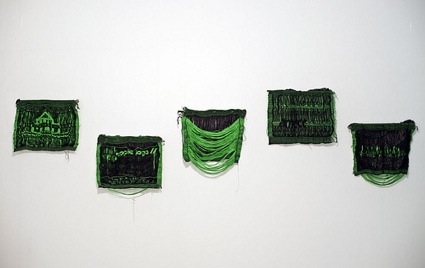 Melissa Barron, untitled [screencaptures], 2010. Image Furtherfield
Melissa Barron, untitled [screencaptures], 2010. Image Furtherfield
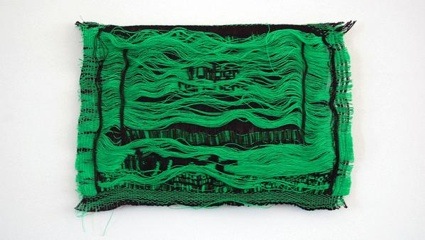 Melissa Barron, numbermunchers from the untitled [screencaptures] series
Melissa Barron, numbermunchers from the untitled [screencaptures] series
And because glitch art is so seducing, i’ve also been wondering whether or not it has already been translated into a more mainstream commercial world?
The concept that a glitch can be designed or distributed through standardized glitch software, seems at first maybe a-typical, but has in fact become a more and more common tendency and even important tradition in recent glitch art. More and more ‘new’ glitch art is being modeled after authentic glitches inherent within older media, perpetuating a shift from destabilizing breaks within technology or information-based processes towards a generic and associative display of more or less ‘retro’ effects.
Besides this, mainstream media have a tendency to leach onto any emerging aesthetic and try and capitalize on it.
The biggest loser Australia in which glitches are used as transitions between spy cams that film ‘illegal’ activities of one of the contestants.
The MTV video music awards using glitches to make the sponsors (-Verizon-) look cool.
I actually created a youtube channel in which to collect glitches found in popular culture and media. It’s a very loose collection of snippets of advertisements, movies, videogames and television that use glitch effects for different purposes. I think these forms of glitch are examples of the growing vocabulary of media materialities in which different glitch effects gain meaning beyond their original technological /root. Some day I actually would like to write a dictionary of glitch effects.
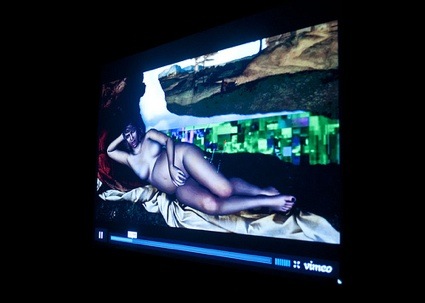 Glitch Art 0P3NR3P0.NET. Image Furtherfield
Glitch Art 0P3NR3P0.NET. Image Furtherfield
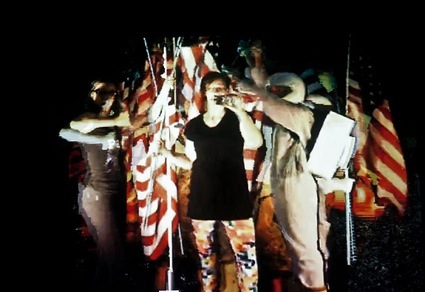 Glitch Art 0P3NR3P0.NET. Image Furtherfield
Glitch Art 0P3NR3P0.NET. Image Furtherfield
What’s next for GLI.TC/H? Are you planning other exhibitions, publications or events?
GLI.TC/H is the title of a festival I co-facilitate with Nick Briz and Jon Satrom, which has been running for three years now. GLI.TC/H concepts and ideals are based on the free and open sharing of inspirations and theoretical and technological knowledge and maybe even more so on creative community building (DIT = Do It Together), poking and pushing. The GLI.TC/H happenings aim to bring like-error-minded bug collectors together IRL, to engage and share work/ideas/concerns and to foster collaborations.
So whats next? First off… we might be losing our domain in the near future due to “a personal dispute” based over the .tc extension (which is associated with the Caicos Islands). This is why the name of the GLI.TC/H festival might change to GLI.TX or maybe GLI.FK…
Besides this we are working on a GLI.TC/H 2112 READER[ROR} – a publication associated with last year’s festival.
Thanks Rosa!
Nick Briz, The Glitch Codec Tutorial, 2011
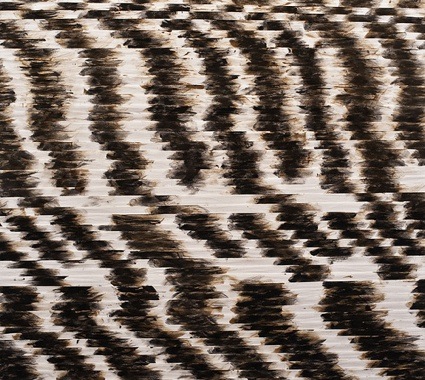 Ant Scott, Beyond Yes and No, 2013. Image Furtherfield
Ant Scott, Beyond Yes and No, 2013. Image Furtherfield
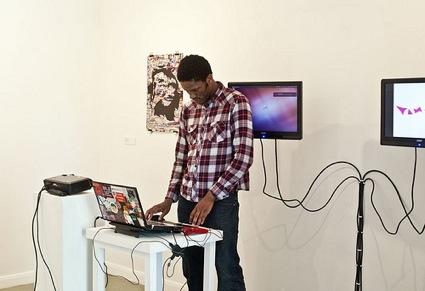 Antonio Roberts performing at Glitch Moment/ums Opening Event – 08 June 2013. Image Furtherfield
Antonio Roberts performing at Glitch Moment/ums Opening Event – 08 June 2013. Image Furtherfield
* A slightly re-written paragraph from: Menkman, Rosa. Tipping Point of Failure. Exhibition Catalogue. November 2010.
More photos in Furtherfield’s Glitch Moment/ums flickr set.
Glitch Moment/ums is at Furtherfield, London, until Sunday 28 July 2013. With works by Alma Alloro, Melissa Barron, Nick Briz, Benjamin Gaulon, José Irion Neto, Antonio Roberts Ant Scott and 0p3nr3p0.net.
